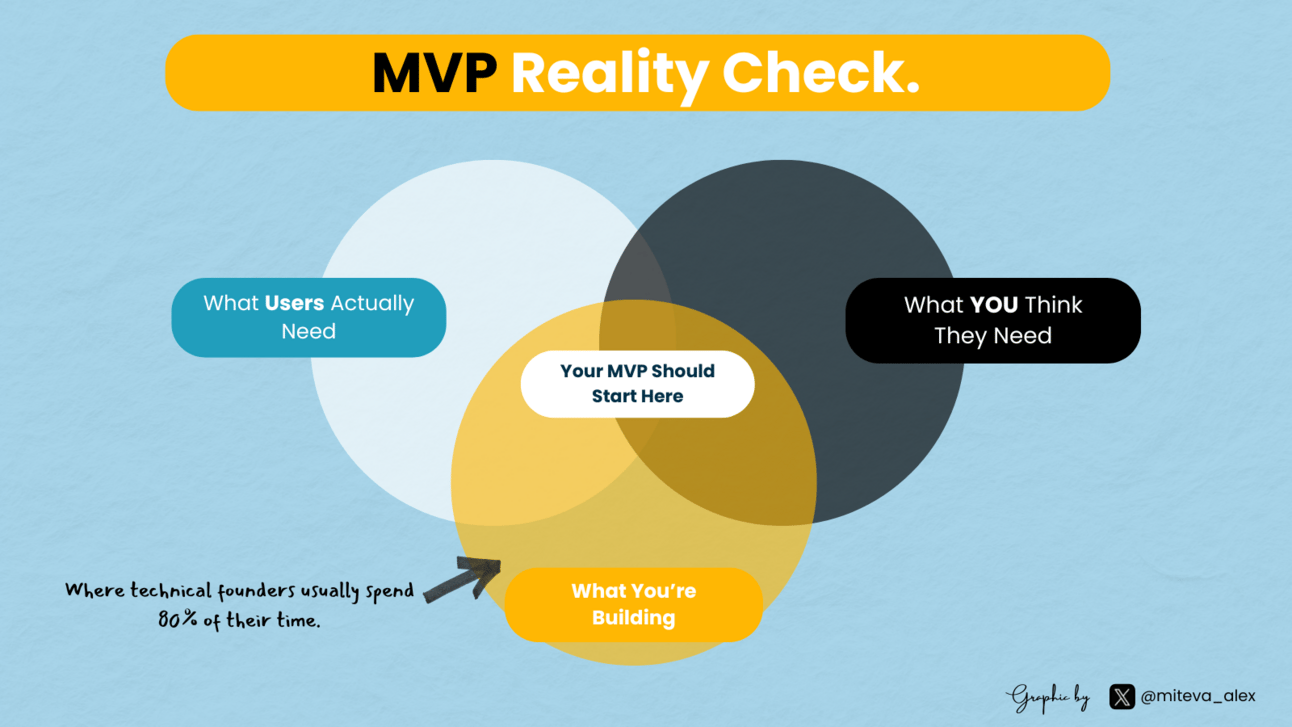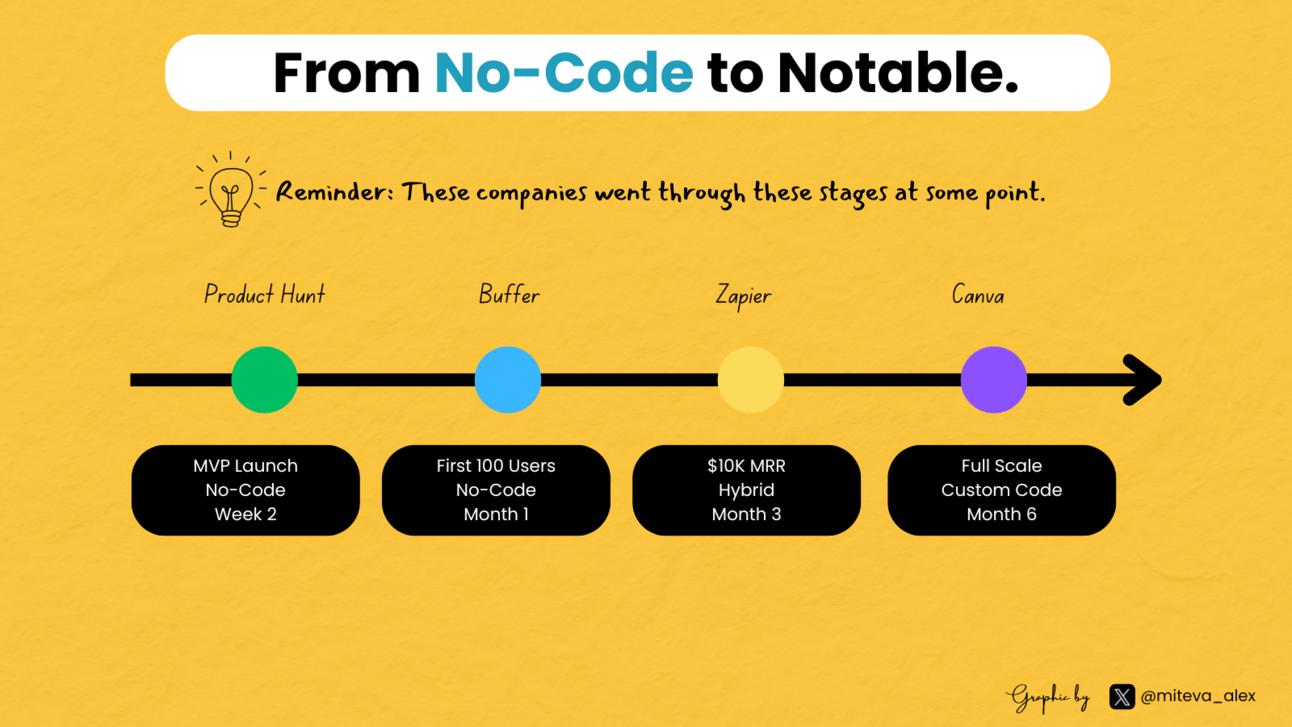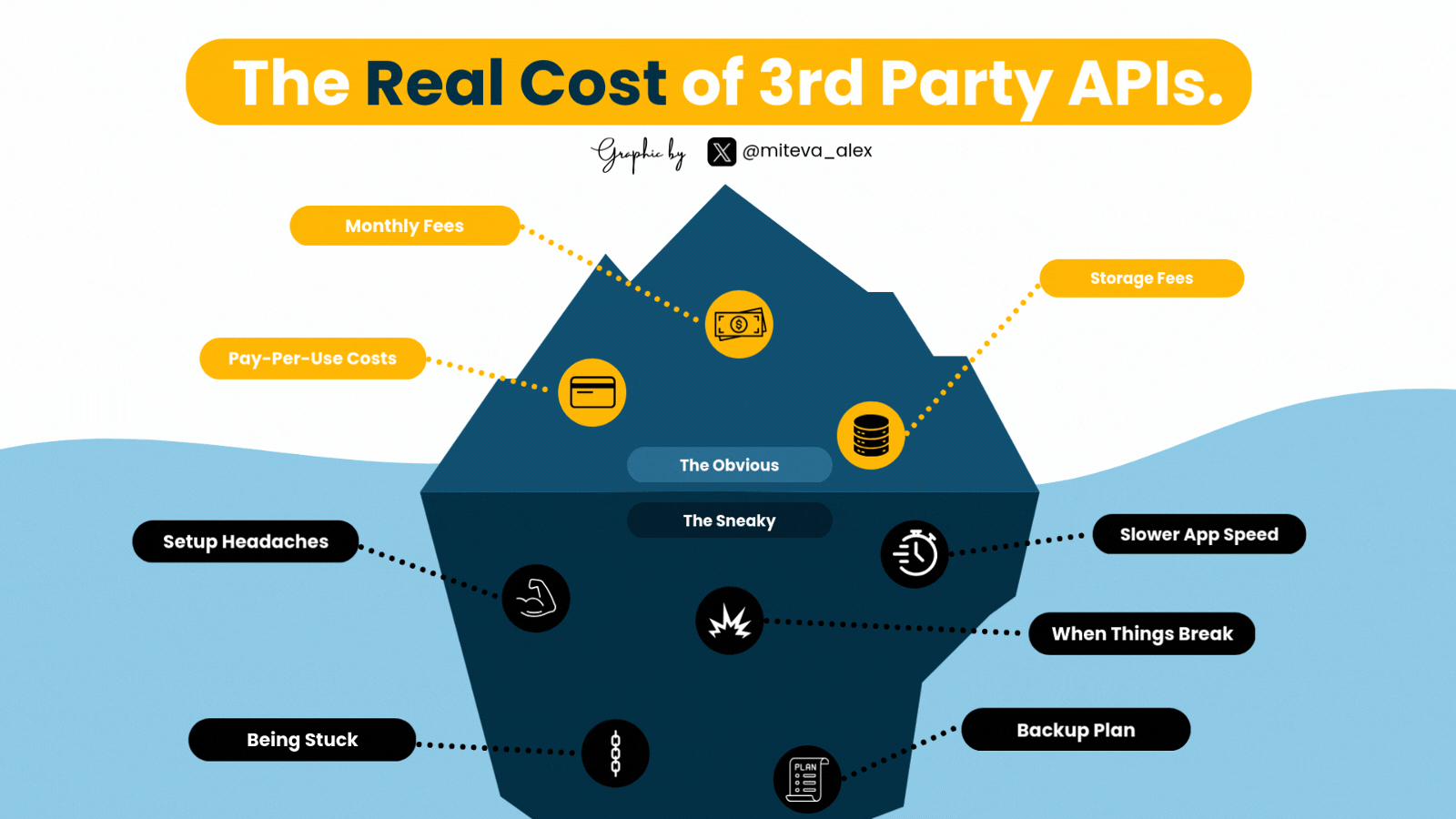- The Technical CEO
- Posts
- Stop Coding Your MVP (Until You Read This)
Stop Coding Your MVP (Until You Read This)
PLUS: The Hidden Costs of APIs You Need to Know.

✨ Welcome to the First Issue of The Technical CEO!
Hey there - I'm a software engineer diving into founder life, and between git commits and growth metrics, I figured we could all use a weekly dose of real talk about building in 2025. Each week, we'll cut through the noise and explore what actually matters when coding meets entrepreneurship. Grab your coffee and let's build something cool. ☺️
☕️ Here are this week’s major spills. Let’s dive in:
💨 Why your MVP doesn’t always need custom code.
💨 Trending: AI agents, designer-to-tools transitions, and pricey LLMs.
💨 The hidden costs of APIs and what you might not see.
☕ Your MVP Doesn't Need Custom Code.
Your MVP Doesn't Need Custom Code (And Yes, I'm a Software Engineer).
Here's a wild stat: Canva started as a simple online yearbook tool - now they're worth $40 billion. That's what happens when you focus on solving problems instead of perfecting architecture. Let's talk about what this means for us in 2025.

The market has shifted dramatically. Product Hunt? Started as a simple email list before becoming a tech giant. Zapier? Tested their idea with a basic landing page. Hundreds of startups are now running their first $100k in revenue through no-code tools.
Those enterprise clients who used to demand custom-built solutions? They're signing major deals with startups running on modern no-code platforms. Buffer proved this years ago by validating their entire business model with a simple two-page MVP before writing any real code.

When to Level Up Your Tech:
You're hitting platform limits.
Core features take more than 5 seconds.
Monthly tool costs exceed $2k.
Your paying customers need features the platform can't handle.
👩🏻💻 Pro Tip: Structure your no-code MVP in modules. Want proof? Look at Substack's early days - they started simple and grew into a publishing empire.
Remember: We're all builders at heart, but our real success comes from getting solutions into people's hands.
Let's build something great - even if it starts with no-code. ❤️
🔍 Weekly Tech Trends That (Actually) Matter
Here are important ones so you don’t have to sift through hundreds of updates.
👉 AI-Agents are EVERYWHERE, as we expected.
👉 Ethical AI Progress.
👉 Cost-Efficient AI Models.
👉 Newsletter Tools are getting more powerful.
👉 Designers to Developers?
Now, let’s dive into the details:
AI-Powered Workflow Revolution 🤖
OpenAI just released Operator. While it’s only available to Pro users for now, it looks incredibly powerful. It can use your browser to do tasks for you, like surfing the web to find trending business ideas.The TL;DR: AI is going to start taking over more and more of our time-consuming tasks.
What to Watch: OpenAI’s next steps in improving automation and how this will impact our workflows and jobs. It's both exciting and a bit scary.
Ethical AI Progress ⚖️
Anthropic’s on a mission to make AI more in tune with human values, which is why Claude has been very different from models like GPT or DeepMind. Now, Claude can cite its responses. It can tell you where it gets its information from based on the sources you give it.The TL;DR: As AI gets smarter, ensuring it’s safe and reliable is crucial, and Anthropic’s leading the charge for now.
What to Watch: More releases from Anthropic and how they’re shaping ethical AI.
Cost-Efficient AI Models 💸
DeepSeek-R1 is offering powerful AI at a fraction of the cost. Yep, really.The TL;DR: People get top-tier AI without draining the budget.
What to Watch: DeepSeek shaking up AI pricing and how it changes the game.
Newsletter Builders to Designers 🎨
Beehiv’s Website Designer (Beta) is yet another example of how no-code website builders are changing the game. While only available to Max users for now, it looks pretty cool.The TL;DR: No-code web design tools are growing more and more.
What to Watch: Beehiv’s full launch and the low-code/no-code revolution.
Seamless App Development 💻
Lovable’s Figma integration now lets you turn your designs into fully functional apps. This is HUGE for designers getting into code. Let’s hope it works well.The TL;DR: The design-to-app workflow just got a major upgrade.
What to Watch: Lovable’s future moves and how this trend takes off.
🧠 The Hidden Cost of APIs.
I remember the time I thought integrating a "simple" API would take my weekend. Three weeks and several coffee-fueled debugging sessions later, I learned a lesson worth sharing with every founder out there.

The Hidden Costs of APIs
The Visible Costs (AKA The Bill You Actually See):
Base Pricing: Most APIs start with a friendly $49/month tier that covers basic usage. But hit 100k users? That same service jumps to $2,000+ per month. The OpenAI API is a perfect example - those completion tokens add up fast.
Per-Request Costs: Each API call costs money. At $0.0001 per call, it seems tiny. But multiply that by millions of requests (like every time a user loads their dashboard), and you're looking at a serious amount.
Storage Fees: Every byte stored through the API adds up. Just ask anyone using AWS S3 for user uploads or Firebase for real-time data.
The Invisible Costs (AKA The Real Pain Points):
Integration Time: Even well-documented APIs like Stripe often need serious engineering time. Payment flows, webhooks, testing environments - it's never just copying sample code from the docs.
Maintenance Load: APIs evolve constantly. When Salesforce deprecates an endpoint or MongoDB changes its connection protocol, that can add up to a full day of engineering work.
Performance Impact: Every external API call adds latency. A chat feature might need 3-4 API calls to load, each adding 100-500ms. Suddenly your snappy app feels sluggish.
Vendor Lock-in: Once you've built your auth system around Auth0 or your entire messaging flow around Twilio, switching providers means rewriting core parts of your app.
Error Handling: You need code for API timeouts, rate limits, and outages. A "simple" payment integration needs logic for card declines, network issues, and service disruptions.
Redundancy Planning: When critical APIs go down (and they will), you need backups. That means double the integration work for important features.
👩🏻💻Quick Tech Tip: Take your predicted API costs, multiply by 3x, and timeline by 2x. If those numbers work for your business model, proceed. If not, building in-house might make more sense. APIs are powerful tools - just make sure you see the whole picture before diving in.